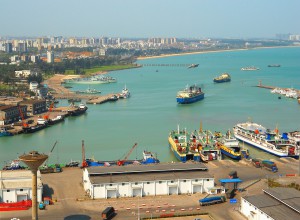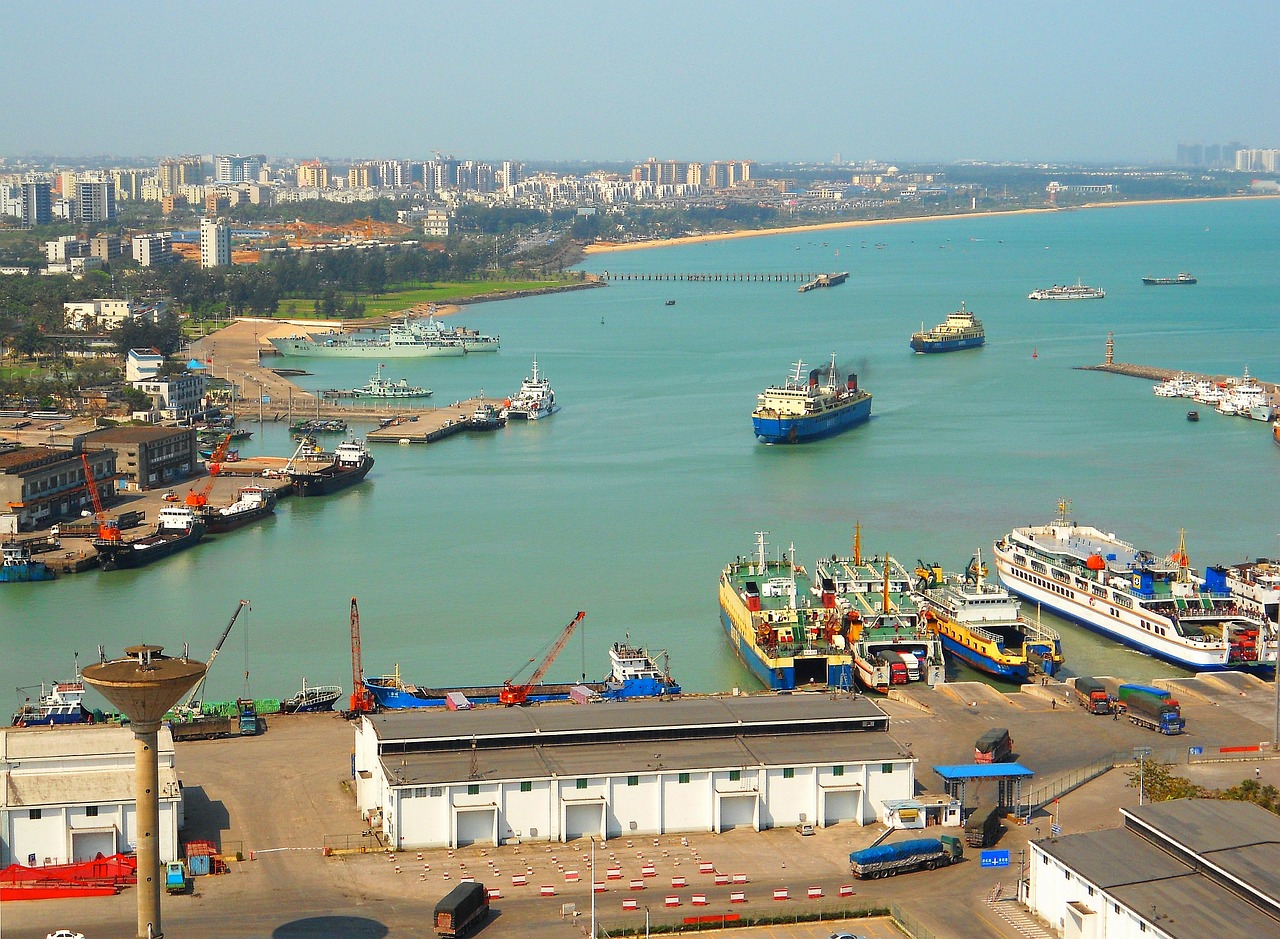U.S. federal government policies with the People’s Republic of China (PRC) involve trade and investment plus travel for tourism, education, and employment, plus migration. People and firms in the U.S. make agreements (contracts) with people and firms in China to import or export goods and services, and to invest in companies that produce goods and services. Governments make rules and regulations limiting these investment and trade agreements between Chinese and U.S. people and firms.
Trade agreements generally restrict as well as promote trade and investment in various ways, and are influenced by lobbyists trying to protect the interests and advance the agendas of various business, union, and environmental groups.
Current and proposed trade and investment agreements tend to be complex and confusing and the interests of both China and the U.S. could be advanced by simplifying or abolishing some.
 Trade agreements like the Trans-Pacific Partnership (TPP) are shaped by interest groups advocating various social, labor, and environmental agendas. The TPP excludes China as a way to promote these social, labor, and environmental policies in China.
Trade agreements like the Trans-Pacific Partnership (TPP) are shaped by interest groups advocating various social, labor, and environmental agendas. The TPP excludes China as a way to promote these social, labor, and environmental policies in China.
NSDA debaters have U.S./China policy reform as their 2016-2017 resolutions:
Resolved: The United States federal government should substantially increase its economic and/or diplomatic engagement with the People’s Republic of China. (NSDA website link)
NCFCA debaters has a similar topic for the 2016-2017 school year:
Resolved: The United States Federal Government should substantially reform its policies toward the People’s Republic of China.
And posts here started a year ago for the similar Stoa Asia Trade resolution:
Resolved: The United States federal government should substantially reform its trade policy with one or more of the following nations: China, Japan, South Korea, Taiwan.
 Early posts on the Asia Trade topic emphasized that these listed economies, along with the U.S., have become tightly integrated over the last two decades. For example Foxconn, a Taiwanese firm that assembles Apple and other gadgets, is China’s largest private employer. South Korean and Japanese firms have vast investments and manufacturing operations in China. General Motors sells more cars in China than in the U.S. And in March, McDonald’s announced:
Early posts on the Asia Trade topic emphasized that these listed economies, along with the U.S., have become tightly integrated over the last two decades. For example Foxconn, a Taiwanese firm that assembles Apple and other gadgets, is China’s largest private employer. South Korean and Japanese firms have vast investments and manufacturing operations in China. General Motors sells more cars in China than in the U.S. And in March, McDonald’s announced:
… that in the next five years it plans to add about 1,500 restaurants in China, Hong Kong, and South Korea—up from its current count of 2,800—including more than 1,000 in China alone.
For an overview of major U.S./China policy debates, I recommend three articles (and recommend earlier posts).
On the the economic benefits of trade: Douglas Irwin, “The Truth About Trade
What Critics Get Wrong About the Global Economy” in the July/August, 2016 issue of Foreign Affairs. Valuable analysis and recent history that answers most concerns and claims in the next two articles that are critical of today’s mostly open trade policy with China and other Asian countries.
This November, 2015 post in The Conversation argues: “The Trans-Pacific Partnership poses a grave threat to sustainable development.” The key here is that critics of the TPP trade agreement want it to include “enforcement mechanisms” to advance U.S. policy preferences for gender, labor, environmental, and climate issues.
The labor-backed Employment Policies Institute says trade with China has caused extensive job losses and wage stagnation in the U.S.: “Hearing on U.S.–China Economic Challenges: The impact of U.S.–China trade” (February 21, 2014).
These three articles should give debaters a sense of the claims and clashes with U.S./China policy reform proposals.
(Revised September 4, 2016)
Additional notes and links to recent posts:
Pdf with more recent China posts: ET Report-JanuaryChina2017
Listed on NCPA Debate Central.
• China and Cuba Trade, Labor, and Migration
What issues should be on the table when negotiators from two governments hammer out what trade rules are relevant and reasonable? … A couple things connect the China policy topic and the Cuba Public Forum topic. First, the refugee policy that allowed those smuggled from China to be legal citizens of (then British) Hong Kong as soon as they touched land. … U.S. policy was similar and allowed those escaping communist Cuba, once they made it to U.S. territorial waters, to stay legally…revise in 1995 to a “wet foot/dry foot” policy. Then Obama Admin. shifted policy again, as part of normalizing relations with Cuba
• US/China Engaging in Nationalist Policies
Apart for the money governments spend directing research and development to area they deem strategic (ballpoint pens?), such subsidies and policies stoke nationalist responses in Japan, the U.S. and Europe…
• Bootleggers and Baptists Agree to Restrict Trade with China
When the President and Congress consider trade legislation, a wide range of interest groups gather to advance their agendas. These agendas are not always obvious, and sometimes corporate and union interests misdirect the public about their motivations.
• For Still-Poor China, Coal Pollution from Home Heating
The Chinese government energy policy goals are to reduce air pollution around Chinese cities, and to reduce CO2 emissions in order to address climate change. These goals overlap, but are not the same. Wind farms and solar installations don’t emit air pollution, but neither does less-expensive natural gas combined-cycle power, which can be located closer to cities and customers. New coal power plants emit less air pollution, especially compared to the dense pollution from antiquated coal-fired power and home coal burning.
• US/China Farm Wars
In “United States Challenges Excessive Chinese Support for Rice, Wheat, and Corn” (September, 2016), the Office of US Trade Representative announced new action against China. … The U.S. government also subsidizes US farmers growing and exporting rice, wheat, and corn. Comparing government between countries is complex. … reducing and reforming farm subsidies would help rationalize commodity farm production in US and China, reduce environmental harms, and reduce financial burdens to taxpayers in both countries.
• Mismanaged Fisheries Key to South China Sea
There is no more important bilateral relationship than that between the United States and China. Yet the Congressional Research Service warns that ties have “become increasingly complex and often fraught with tension.” Relations appear likely to become even more fractious with the election of Donald Trump as president. Every four years the People’s Republic of China (PRC) becomes a presidential election issue, but Americans deserve [more on] U.S.-China political and economic relations than candidates’ sound-bytes.
• China’s Sustainable Agriculture: “the biggest threat to humanity?”
“How Antibiotic-Tainted Seafood From China Ends Up on Your Table,” (Bloomberg Businessweek, December 15, 2016), describes the traditional “sustainable” Chinese use of animal waste to feed fish. Since the beginning of agriculture, animal waste has fertilized crops (it’s the organic way!). But the addition of antibiotics to boost animal size and disease resistance shifts the microbe ecosystem in animal waste. Some microbes gain resistance to antibiotics, and are then flushed into Chinese fish ponds, adding antibiotic resistance to microbes in fish later shipped (or transshipped) to the U.S.. (read more)
